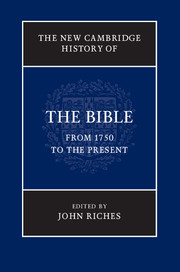
- Cited by 2
-
Cited byCrossref Citations
This Book has been cited by the following publications. This list is generated based on data provided by Crossref.
Schmidt, Thomas 2021. The Book of Revelation and its Eastern Commentators.
Ska, Jean-Louis 2022. The Cambridge Companion to Genesis. p. 11.
- Publisher:
- Cambridge University Press
- Online publication date:
- June 2015
- Print publication year:
- 2015
- Online ISBN:
- 9780511842870
- Collection:
- Cambridge Histories - Religion




